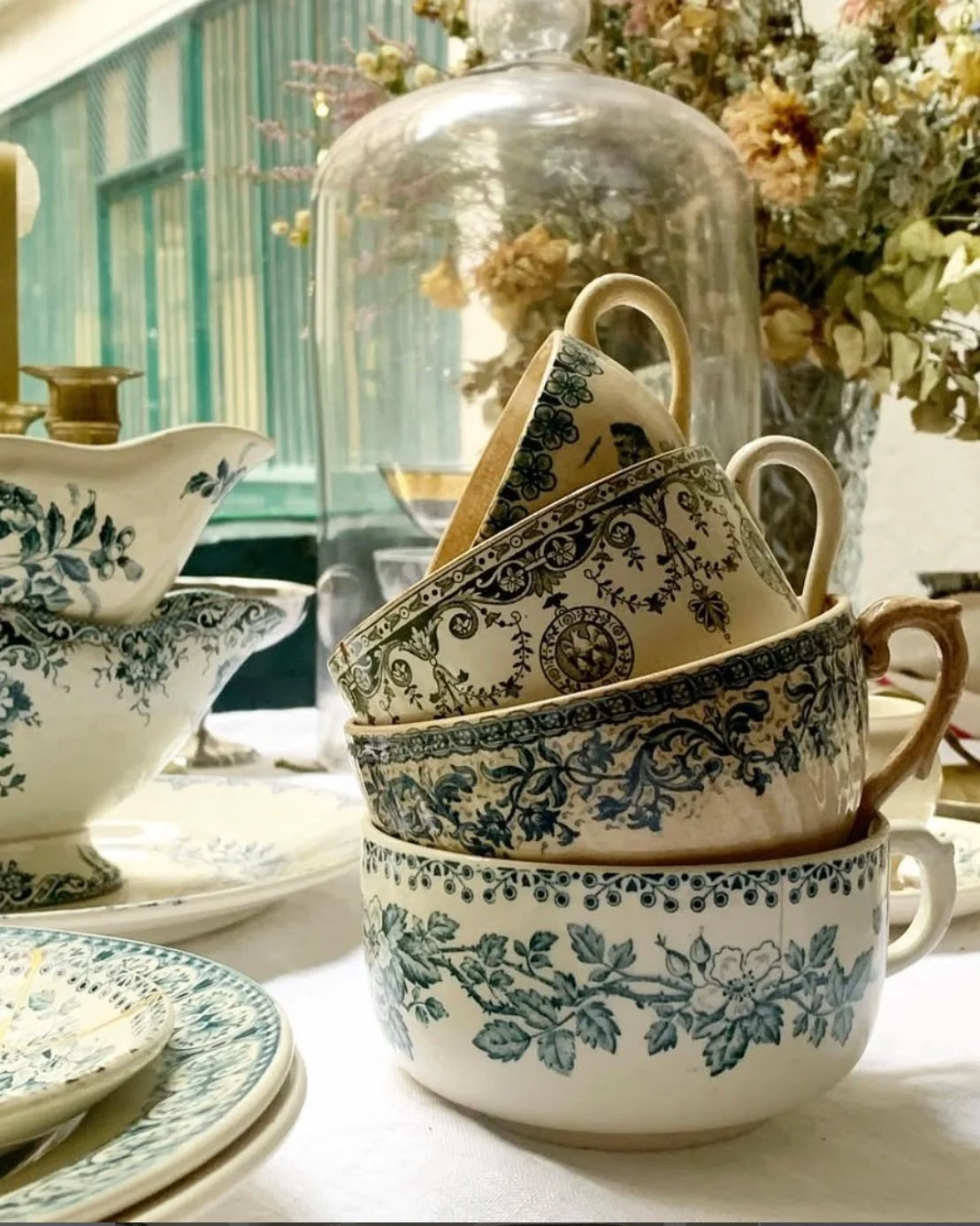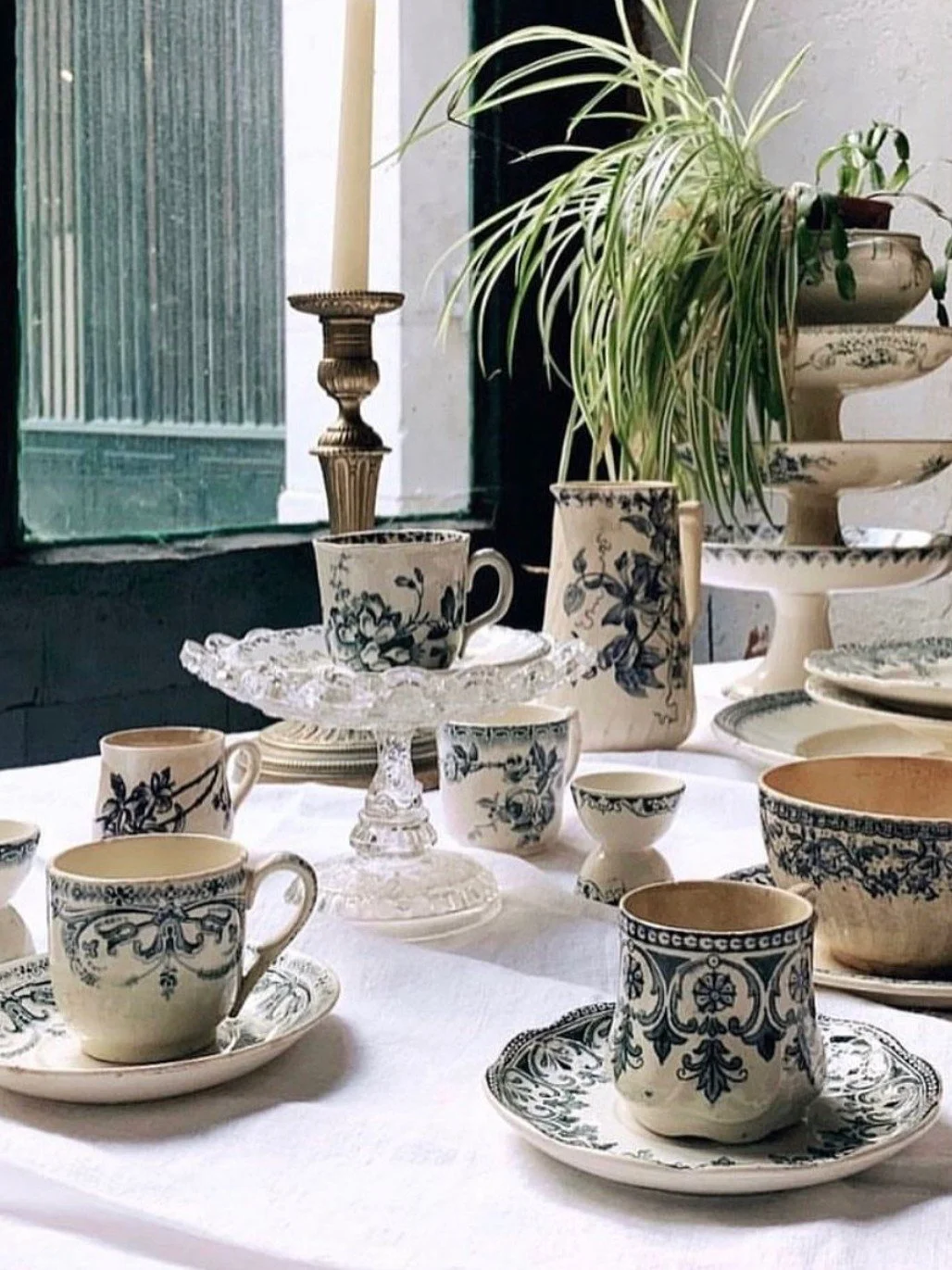Blanche Patine - White Patina
In an atelier tucked away in a quiet Parisian courtyard, Cécile Viarouge tenderly arranges a set of timeworn ceramic plates. Each one is delicately floral, softly faded, and deeply storied. Through her work as an antique dealer and decorator under the name Blanche Patine (White Patina), Cécile has not only revived interest in 19th-century French ironstone (terre de fer), but she’s also become one of its most devoted guardians.
With her first book, Terre de Fer: Collections de Céramiques Françaises, Cécile opens the doors to her universe. When she first began researching ironstone out of personal curiosity, she quickly realized how little had been documented. Books were scarce, reference materials even more so. So, she created her own book—a visual archive and a love letter in one—so that all she’s learned over the years would continue to live on.
A Chat with Cécile
We sat down with Cécile to talk about how her passion for terre de fer began, and why these humble handmade ceramics still matter today.
Can you share how you became an antique dealer?
I studied art history and came from the art market world. I used to work in a gallery. I’ve always had a deep love for objects just as they are, for their stories, their memories, knowing who made them, where they come from, and trying to understand all those things.
PHOTO CREDIT: Blanche Patine
What drew you to terre de fer specifically?
It all started about ten years ago. I’m also a painter, so I have a genuine love for the decoration on these ironstone pieces, the floral motifs, as well as the raw, natural feel of the ceramic. I’m also drawn to their imperfections: the little misalignments in the design, the faded prints… Those flaws completely charmed me.
At the time, no one was interested in ironstone. When I first began, I was one of the first to really speak about these pieces. Where I found them, people were throwing them away. There was truly no interest in them. But I completely fell in love and decided to become their “maman,” to care for them and share them with the world.
PHOTO CREDIT: Blanche Patine
If people were throwing them away, what made you think these pieces were going to come back? We’ve certainly noticed an increased interest in transferware pieces over the last couple of years.
There’s definitely a kind of global trend happening now, it’s incredible. Hundreds of antique dealers are now drawn to these pieces. But there’s a mix of approaches, and that’s what makes it beautiful. Each of us brings our own sensibility to it. People now come to me specifically for my sensibility, my little eye for these pieces. I’ve become something of a decorator over time.
Can you tell us a bit more about the French ironstone manufacturers?
In my shop, I focus exclusively on French ceramics. Initially, this type of ceramic originated from England, but by the end of the 18th century, French manufacturers had begun producing it for a wider audience. It became everyday tableware, used both for simple meals and more elaborate ones.
Everyone owned some, from working-class families to the bourgeoisie and even the aristocracy. At the time, all French manufacturers were producing ironstone to suit different markets and customers.
You can see it in the quality of the glaze, the clay, the details in the design, and, of course, the manufacturer itself. For instance, pieces from Gien or Creil & Montereau were mainly intended for the bourgeois class, while pieces from Saint-Amand were more accessible and affordable. So not all ironstone is necessarily of great elegance or rarity.
Is there a motif or manufacturer in particular that you love?
I really can’t choose, and I get asked that a lot lately. People will say, “If there were an earthquake and you could only keep one piece, which one would you save?” But it’s impossible. I genuinely believe each piece is a little treasure.
That said, I do have a real fondness for certain manufacturers, like Jules Vieillard, or the houses of Gien, Creil & Montereau, Choisy-le-Roi, and Salins.
It’s easier for me to say which ones I feel less drawn to. For example, Saint-Amand often has a whiter base and slightly less refined patterns. Same with Sarreguemines. But as for a single motif I love most? I just can’t narrow it down.
PHOTO CREDIT: Blanche Patine
We thank Cécile for taking the time to share a bit of her knowledge and passion for French ironstone with us. If you’d like to learn more about Blanche Patine, visit their website or follow them on Instagram.
At Les Fleurs, we share the same love for this style of antique French pottery and are always searching for new and different pieces whenever we’re in France. If you’re looking for something unique to add to your summer tabletop, take a look to see what’s in store at Les Fleurs.
À bientôt,
Sandra













